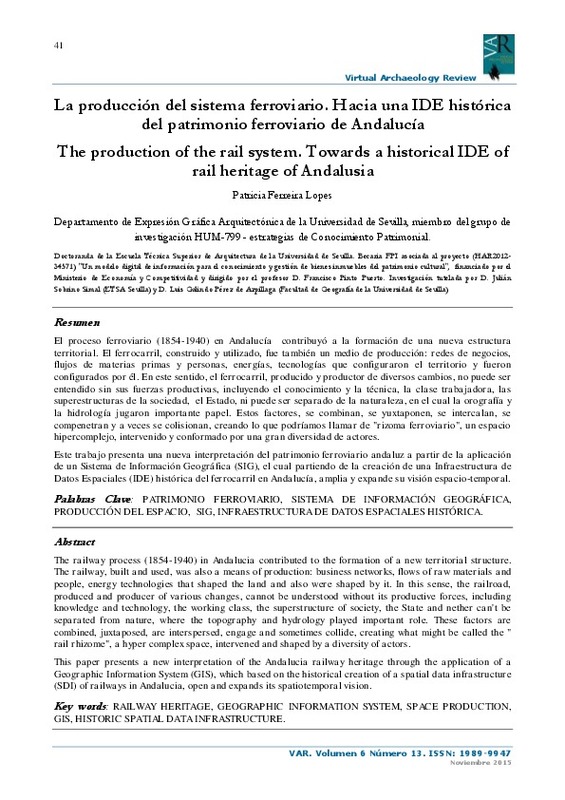JavaScript is disabled for your browser. Some features of this site may not work without it.
Buscar en RiuNet
Listar
Mi cuenta
Estadísticas
Ayuda RiuNet
Admin. UPV
La producción del sistema ferroviario. Hacia una IDE histórica del patrimonio ferroviario de Andalucía
Mostrar el registro completo del ítem
Ferreira Lopes, P. (2015). La producción del sistema ferroviario. Hacia una IDE histórica del patrimonio ferroviario de Andalucía. Virtual Archaeology Review. 6(13):41-50. https://doi.org/10.4995/var.2015.4371
Por favor, use este identificador para citar o enlazar este ítem: http://hdl.handle.net/10251/97763
Ficheros en el ítem
Metadatos del ítem
| Título: | La producción del sistema ferroviario. Hacia una IDE histórica del patrimonio ferroviario de Andalucía | |
| Otro titulo: |
|
|
| Autor: | Ferreira Lopes, Patricia | |
| Fecha difusión: |
|
|
| Resumen: |
[EN] The railway process (1854-1940) in Andalucia contributed to the formation of a new territorial structure. The railway, built and used, was also a means of production: business networks, flows of raw materials and ...[+]
[ES] El proceso ferroviario (1854-1940) en Andalucía contribuyó a la formación de una nueva estructura territorial. El ferrocarril, construido y utilizado, fue también un medio de producción: redes de negocios, flujos de ...[+]
|
|
| Palabras clave: |
|
|
| Derechos de uso: | Reconocimiento - No comercial - Sin obra derivada (by-nc-nd) | |
| Fuente: |
|
|
| DOI: |
|
|
| Editorial: |
|
|
| Versión del editor: | https://doi.org/10.4995/var.2015.4371 | |
| Tipo: |
|








